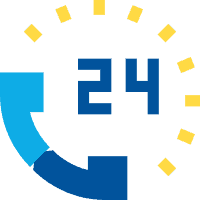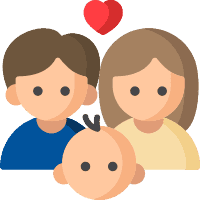The Centers for Disease Control and Prevention estimates that Autism Spectrum Disorder (ASD) impacts 1 in every 54 children throughout the United States. That makes ASD a fairly common developmental disorder. Symptoms generally manifest in early childhood, but those symptoms can vary widely.
Commonly, ASD symptoms can interfere with a child’s ability to communicate. As a result, parents may find it difficult to understand their kiddo’s needs and wants. In addition, parents may find social interactions challenging or frustrating.
Communication in children with autism presents some unique and often significant challenges. But those challenges are not insurmountable, and a speech language pathologist can often help considerably.
What Does Communication in Children with Autism Look Like?
Autism Spectrum Disorder is aptly named. That’s because all of the symptoms associated with this condition exist on a wide spectrum of severity. Communication challenges, for example, could present as relatively minor inconveniences or significant social hurdles. In general, however, communication in Autism will present as the following:
- Repetitive language: Children with ASD may exhibit a behavior called echolalia, in which the speaker repeats words or phrases that they have heard. For example, your child may ask, “Do you want a treat?” Rather than attempting to gage your desire for dessert, as you might expect, they are actually attempting to express their own desire for sweets. And this approach has a certain logic. When you said the phrase, the child got a treat, so why shouldn’t the same be true when they say the same phrase?
- Delayed language development: Children with Autism Spectrum Disorder may exhibit delayed or unique, atypical language development.
- Difficulty with body language: In many instances, children with ASD can have a hard time understanding or engaging in typical body language behavior (pragmatics). Maintaining eye contact, for example, is one common area of challenge. Parents may notice that children don’t respond to their smile or other non verbal cues in the expected ways.
- Hyperfocus on topics: A child with Autism Spectrum Disorder may not engage in much small talk, and so they may seem very quiet. However, there may be certain topics that the child can talk about quite fluidly and at length. When your child with autism starts discussing these topics, it may be difficult for them to talk about anything else!
- Difficulty understanding figurative language: Those with ASD will tend to take words and phrases quite literally. For example, if you use the phrase “think outside the box,” an individual with ASD may become fixated on this supposed box and where the box is in relation to you rather than the idea you’re attempting to convey.
An Individualized Condition
Your child may present ASD symptoms in easily detectable ways, or they may experience their symptoms more uniquely. What’s important to remember is that in many cases, a child with ASD is simply experiencing the world in a different way–not necessarily one that is better or worse.
However, functioning in society requires the development of specific skills and coping mechanisms. The development of speech-language skills in those diagnosed with autism is not meant to invalidate or diminish the natural way that a child with ASD experiences the world.
Speech Therapy Treatment
For children with ASD, improving communication in patients with autism will most often begin with an assessment by a speech language pathologist. The assessment will determine your child’s current speech-language and oral motor skills and how best to build on them. Treatment will typically have three basic goals:
- To help your child communicate with you and your family.
- To help your child understand spoken language and to assist them in expressing themselves.
- To help your child communicate well in social and public spaces.
Every child presents differently and goals are unique to each child and family. It is important for families to work closely with their speech language pathologist to develop a plan that addresses the individual strengths and weaknesses of your child.
Therapy sessions should be designed to meet your child where they are with their current speech-language skills and then slowly introduce new skills or concepts in a way that feels comfortable and attainable.
How to Communicate at Home
You can talk to your child’s speech language pathologist about the best ways to facilitate communication in your home. Often, these general tips could help:
- Say exactly what you mean. Skip figurative language–or, at least don’t be surprised when your kiddo becomes confused by your figurative language. Be a little patient and stay positive.
- Show your love. Just because your child won’t always reciprocate certain nonverbal cues doesn’t mean you should stop providing affection. Your child will always need to feel loved and appreciated.
- Keep an open mind. Remember, your child has a different way of looking at the world. It’s entirely possible to learn something new from that different perspective.
- Keep conversations simple. Refrain from covering many topics in one sitting. The more focus, the better.
- Share some interests. Your child may want to talk about certain topics again and again. If you can muster up enthusiasm for these topics, those conversations will be much more fruitful.
Communication with children who appear to be or are on the spectrum can often be a challenge. But in many cases, changing your perspective or frame of mind can be especially helpful. That’s true even as your child develops new skills and communication techniques.
If you feel like your child with autism could benefit from speech-language, oral motor/feeding therapy sessions, talk to a speech language pathologist during a free 15 minute phone consultation or contact us to schedule an appointment.


